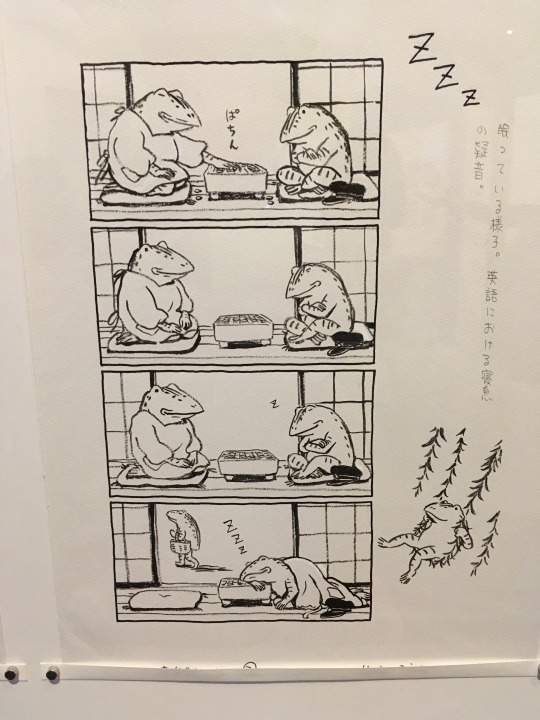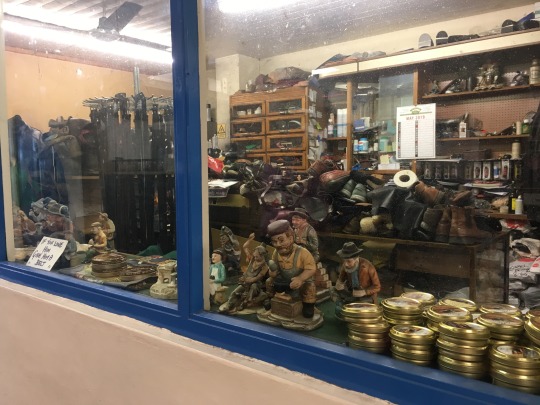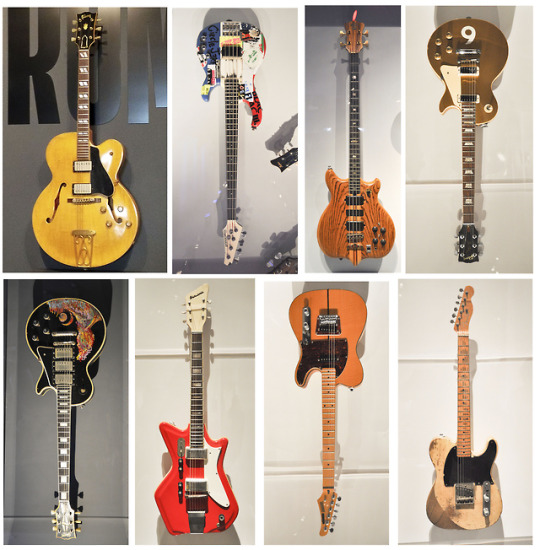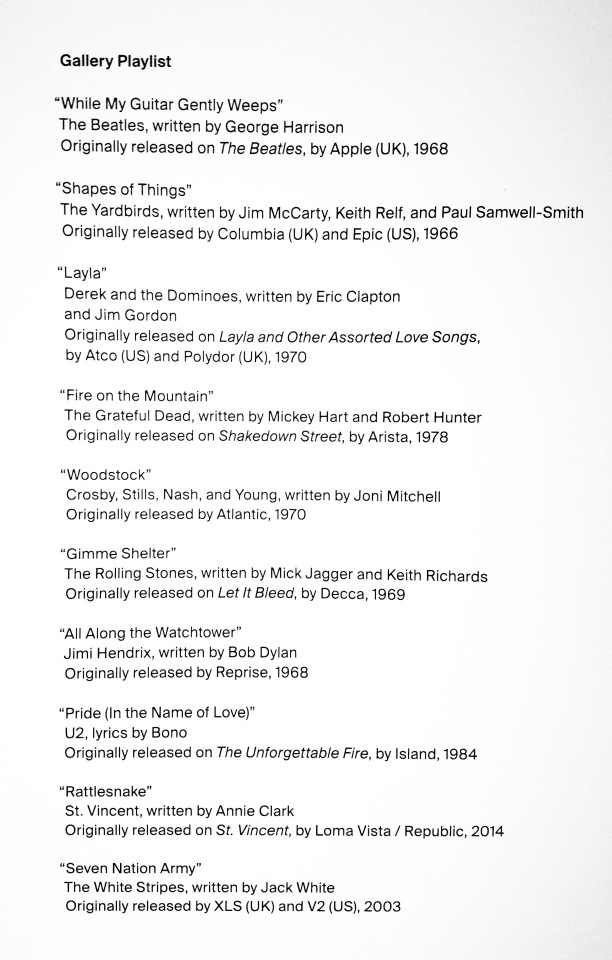#AND HE'S TOPPED THE VIDEO OFF THROUGH DONATING ALL THE MONEY TO THE ACTUAL CREATORS AND SHOUTING OUT QUEER CREATORS!!!!
Text

Man just doesn't stop fucking MURDERING white men who've done very shitty things
Edit: Yes I'm aware that Hbomb wasn't really The Guy to take down Wakefield, and Wakefield was gotten by Deere, however it was for the meme
Edit two: When referring to Shapiro I was talking about the Aquaman clip
#hbomberguy#cassie rambles#he got bencil chaperone for being FUCKING STUPID#he got andrew wakefield for being LITERALLY THE FUCKING WORST#he got tommy tallarico for being a COMPLETE FUCKING FRAUD#and now he's gotten james somerton for being a massive fucking plagiarist#AND HE'S TOPPED THE VIDEO OFF THROUGH DONATING ALL THE MONEY TO THE ACTUAL CREATORS AND SHOUTING OUT QUEER CREATORS!!!!#GODDD HBOMB YOU. YOU GODDAMN.#BIG FUCKING SHOUTOUT
26K notes
·
View notes
Text
UK trip summer 2019
(Argh! I’m sorry for the delay! I meant to finish this back in June, but I haven’t had much time to finally get around to it)
I haven’t been to the UK in 3 years, and while the feelings were admittedly mixed, because it involved a lot of cleaning up and donations of my grandparents’ items, I did get to have a bit of fun and do some new things on this trip.
Our flight would leave in the middle of the day, but we still had to wake up early so that we could arrive at the airport, do airport security, and get to our boarding gate in plenty of time.
This started off by waking up at around 7:00 in order to meet a Lyft driver (for a first time rideshare, Uber failed to find someone for us) who would take us to a bus stop, which would take us directly to the airport.
As we were arriving at SFO, I could have sworn I saw some beehives in a patch of grass between the weaving roads. However, researching it doesn’t seem to bring up anything. Hmm...
I was looking forward to eating pizza at the selection of restaurants before the security checkout, but unfortunately it was closed, and all of the other restaurants seemed to have been replaced. So the only thing that appealed to me then was Chinese food. It was pretty tasty though.
The entertainment on the flight was a little different than what I’m used to (then again I haven’t flown in a few years). They had more limited music options, and the only decade available was the 80s. I could also zoom in anywhere on the map, which is a horrible distraction for someone like me :P Also, the food was pretty tasty, especially the mango sorbet, which was the definite winner for me :P

Cool view of Alcatraz just before we flew past it

I witnessed an airplane halo, also known as a ‘glory’!
Since we travelled light, we didn’t have to wait to collect our luggage afterwards. We also breezed through the passport check, since we’re British citizens.

I like this mirror effect, but the distortion made it extra cool
At this point, it was 7 in the morning, and we had to meet up with a family friend who lives in London, where we would stay at overnight before progressing to our destination. Along the way I saw some students using the Tube to get to school (it was a school day after all). This was kinda interesting as someone who grew up in America and never had to wear a school uniform.


We actually had to meet our friend by walking from the nearest Tube station to her house (which is fine, I don’t mind walking! Especially after a 9 hour flight). Not long after we met up, she showed me this little fox sleeping outside her window (I don’t think I’ve ever seen one in person before!) It likes to do this when the sun is out. Unfortunately for it, it was sleeping next to a couple of squawking magpies.
We then went on a short walk along the canal. There we saw a swan family and a coot family (and babies!!)


We would then head over to the British Museum. Our friend told us in advance that it would be hosting a manga exhibit, and we arrived the day after it debuted. Just before heading over, she brings up that the Rosetta Stone was also there. I didn’t anticipate this, because I thought it was held in a different museum. So I was getting more excited to see the Rosetta Stone over seeing the manga exhibit xD (I joked that I was about to meet my ‘rock star’)

It was about £20 to enter the exhibit, so only I went, while our friend and mum explored the rest of the museum. The exhibit started off with a ‘trip down the rabbit hole’, in reference to perhaps the most influential British work in Japanese media, Alice in Wonderland, and its appearances in manga over the years.
Then it showed the history of manga, manga influences, a brief manga how-to, and genres of manga. I saw some familiar works, like Astro Boy, DragonBall, Sailor Moon, a work from the creator of Akira, One Piece, Golden Kamui, Saint Young Men, etc. I also saw some works that I've never encountered that I'm interested in (a rugby manga, a wheelchair rugby manga coming soon, a murder mystery manga at the British museum, a manga about a saxophonist)
There were also some video exhibits, whether it's clips from anime next to their respective manga, creators/staff talking about their creative process, artists drawing their manga, or a series of clips from Ghibli films, but you weren't allowed to take pics of these.
At one point, I even saw an Attack on Titan cosplayer! (ready to take down the giant inflatable titan head I presume)













It’s difficult to read, but this is Morohoshi Daijiro, and it says that Hayao Miyazaki was strongly influenced by him. I’ll have to look at his stuff sometime.




I probably spent about two hours in there, longer than I expected. Admittedly I was tired, and my legs were getting sore, and a little over half an hour before I was done I needed a loo. I was feeling all sorts of physically gross at this point, and I had no idea how much of the exhibit I was actually absorbing even though I tried.
Before the end of the exhibit, I waited in line to get a photo taken, so the machine would add a comic-like gradient to it and insert it into a comic panel. Once I was done, I made a beeline to the nearest loo (for a split moment I panicked that they would be the ‘pay-to-use’ loos, and I didn’t have any money on me, as all of my stuff was with mum, thankfully it wasn’t).
After meeting back with mum and our friend, we headed back to our friend’s home, as I was feeling too exhausted to do anything else.
By the way, I did get to see the Rosetta Stone, but I would need to see it again when I’m not jet-lagged and there’s less people. By the way, I also learned that the figures on the pediment over the British Museum were created by my ancestor, so... y’know, there’s another reason to revisit the place.

I finally went to bed after some dinner, dessert, and a refreshing shower. I had been awake for about 32 hours!
The next day, mum and I stocked up on food (most of which I missed after a long time of not eating them. I still wish I could eat them more often!) and travelled by train to our destination.
The train also was different than what I’m used to. The livery is different, and instead of there being a ticket(?) on the top of an occupied seat, there was a red/green light above the window that indicated whether the seat was occupied or not.
At some point our passenger neighbours were cracking up and couldn’t stop laughing, which was contagious enough for me and a few other strangers to laugh. It was a great moment. When we arrived, we met up with my aunt, uncle, and cousin, and we had fish and chips and a good chat.
The day after we arrived, we already got started with clearing my grandparents’ house. At this point, I already made peace with the fact that we would need to sell the place (nobody in the family wanted it, plus it needed a lot of work done to it, which would have been pretty costly). Unfortunately, because they had a lot of things, we had to be a bit ruthless with what we had to get rid of, because we certainly couldn’t keep it all. I also let go of a few things I grew up with that I was willing to part with and donate. Still there were several items we were able to keep and bring home with us. Thankfully mum’s friends also would try and keep other things for us. It was still a bit of a heartbreaking process though.



I also finally (after a long time) had a 99! It feels good to walk into an ice cream shop and order one, and they'll know what you're talking about :P
Speaking of food, according to my friend, it’s apparently a crime that I haven’t been to a Gregg’s yet, so I tried some of their food, which were delicious! Unfortunately, they didn’t have an iced split, which my friend has, and is apparently really good. (I love international chats, because my friend can say something like 'try a 99 with monkey blood', and it will make no sense to non-Brits) Even the berries are tastier here! idk if it’s because we’re closer to berry farms, but they’re sweeter and juicier than the ones I get back in America.
Speaking of which, the shops in town are different than what I remember. Only a few places I visit regularly remained.

I also got to see a circus for the first time. Although the acts were amazing, my favourite part of the show, believe it or not, were the clown segments. They consisted of a father and 10-year son duo, and the antics were amusing (the duo trying to run and hug each other but missing and in the end hug ‘around’ each other instead, the father getting an audience member to throw a potato onto a carving fork held in his mouth and epically missing, the father getting some audience members to ride an invisible motorbike with him, etc) Unfortunately the show did have some strobe lights and animal segments (even if they weren’t hurting them, I still don’t see the appeal of watching wild animals doing unnatural things :/ )

One of the things that hadn’t changed was our local cobbler still being in business. Even before the trip, mum wanted to pay him a visit so that he could repair her shoes. He's one of the last relics of the old town, he's 78, and has worked for 57 years including 7 years as an apprentice. He was even one of mum’s first memories from when she was small! There’s something charming about a town shoe shop having several piles of stuff, topped with a huge pile of shoes and the smell of glue and shoe polish while a shoe repair motor runs in the background :)

The local bookshop owner also had a charming shop, with piles of books everywhere. And yes, it’s so small and narrow, only one person at a time can visit. We visited his place a few times to donate most of my grandparents’ books, as well as old items like maps and photographs. We can breathe a sigh of relief that they will be protected and given a new home.
Went for a 2.5 hour walk, first along the beach, then through a newer and more secluded area of town that I’ve never visited before (I ALMOST saw a robin, I’ve only seen the American robin in person)
At one point after shopping, I was holding a leek in my hand, and a lady passing by quipped to me, “I know we’re Welsh, but that’s a bit excessive” :P
Also, idk what made me think of it, but I imagined, instead of dog shows, there would be snail shows. It would last for hours, walking the snail would last for 10 minutes instead of 10 seconds, and the awards would be something like: 'Largest Snail', 'Fastest Snail', 'Hungriest Snail', 'Perkiest Snail', 'Longest Antennae'...



>:U






(I took quite a few panorama shots during this trip)


Unfortunately, a pathway I like to take was closed off





We visited some friends of ours, and some friends of ours visited us. My family and I also did a little burial ceremony for my grandparents (originally mum wanted to buy sweet pea flowers, as they were my grandmother’s favourite. I then ask if my grandfather had a favourite flower. Mum didn’t really know, but she did remember he would always buy my grandmother a rose because he loved her so much. So we bought a red rose as well (afterwards I learned from a friend that sweet pea flowers are a symbol of protection and goodbyes, which is INCREDIBLY SWEET BUT SAD 😭))
The next day we had miserable weather due to Storm Miguel. It was surprisingly the only bad day we had weather-wise. And yet, for some reason mum and I decided to eat out at an Indian restaurant (the food was pretty tasty)
During most of the trip, my family have been fervently trying to research who the people in my grandparents’ paintings were and how they were connected to my family. The only thing I got out of it so far is that my family might be more Scottish that I thought!

Went shopping in Carmarthen (and crossed a bridge next to some sheep, close enough to hear them), but I had to make a train that arrived half an hour after I woke up! Ate at Pizza Express (the food was tasty, but the strawberry still lemonade was PERFECT) Unfortunately we had to cut our shopping time short, because our earliest trains to catch were at around 14:30 and 17:30, and we would rather get back home as soon as possible. We were able to get most of what we wanted though.
One day while I was hanging out with my younger cousin (we chatted a lot during the trip, he does Irish dancing, and he taught me the difference between the different dances), he introduced a couple of fun games that the family got to play: Camping, and Spoons
Camping: Preferably played with 3 or more people
It's a rotation game in which the rest of the group has to figure out what the leader's pattern is
Starting with the leader, each person says 'I'm gonna go camping, and I'm gonna bring...' and then a noun. When the leader says their phrase and noun, they have an unspoken pattern they decided to follow, whether it's a bit of subtle body language they make while saying it, or if it has to do with the nouns themselves. The next person then says the phrase and a noun in hopes that they will follow the pattern. If they do, the leader will respond to their phrase, 'you can come', otherwise 'you can't come'. After the pattern is revealed, the next person becomes the leader, and the cycle continues. Players are allowed to guess the pattern depending on how many people got it (eg: you are allowed to ask for hints if stumped, and if everybody gets it, the pattern can be revealed)
In hard mode, if your attempt is part of the pattern, regardless of whether you know the pattern or not, you have to sit out the rest of the game.
(examples of patterns: saying whatever while having both feet on the floor and hands on lap, dog breeds, alphabetical succession between players (eg: 'hedgehog', 'iodine', 'Jamaica'...), the nouns have to begin with the same letter as your eye colour (lol I never got this one because I don't regularly make eye contact with people), the noun has to begin with the same letter as the cardinal direction you're facing, the noun has to begin with the same letter as the colour shirt the player after you is wearing)
Spoons: Preferably played with 3-13 people
It's a game of speed, similar to musical chairs
There are n-1 spoons in the middle of the table for n number of players and n number of ranks
One player becomes the leader, in which they shuffle the cards and deal four per player. When the leader says 'go', every player including the leader removes a card and places it for the person to their left to grab, while each player must always end up with four cards per 'go' (when saying 'go', the key is that there shouldn't be much time for thinking, the game must move quickly, but there should be about a second or two to organize your cards if needs be, so roughly every 3-5 seconds per 'go')
If a player has four of one rank, they must grab a spoon, and all of the other players must grab a remaining spoon as quickly as possible, in the hopes that they won't be the last player without a spoon
A player that ends up without a spoon loses a life, and after three lives are up, they're out of the game.
With this, a spoon and a group of four of a rank also sit out of the game
When it's down to two players, one of the players sitting out must shuffle the remaining deck, so that the two remaining players don't know what kind of deck to expect, and say 'go'




Went for a lovely walk near the beach










Tiny friends!






Ah yes, this bed of rocks looks comfortable to sit on...
I also got to finally try a 99 with monkey blood, though the syrup isn’t called monkey blood where I’m from apparently. Mum and I also tried to feed the sparrows, but larger birds were lurking and wanted to sabotage the efforts.


After some final decisions on what to bring and what to keep, mum and I left the house for what might have been the last time. We will miss it though. I did take some videos of the place not long before we arrived, as a kind of snapshot of the place, not only for memory, but for a potential reference in one of my stories.
At the airport, I got a pat down for the first time in my life because I had worn the wrong trousers that had more metallic fixings on them >:[
During the flight, I chose a better selection of films on the plane:
旅猫リポート: Cute but kinda sad film about the life of the man who adopted a cat and why he has to give it away to someone he can trust.
Christopher Robin: Very charming film, and the British wildlife scenery was depicted beautifully
Wonder Woman: Well-written film

(I’m curious to know where this is near London)
Overall, this trip was different than what I’m used to, not just because it was less of a family visit, but rather a lot of aspects of what I’m used to have changed a lot over the years. I’m hoping, even if I never live in that house anymore, that I can still pay the town a visit somehow in the future, as it’s still a dear place to me that I had grown up with all my life.
#my posts#my photos#sorry this post is a little more disorganized than before#1) it's been a while since I wrote a travel post#2) tumblr kept undoing my progress several times which was aggravating#I might do a part 2 post with photos from my proper camera#the photos in this post are all from my mobile
1 note
·
View note
Photo










Press preview for Play It Loud: Instruments of Rock & Roll by j- No
Via Flickr:
The Metropolitan Museum of Art April 1, 2019
A groundbreaking exhibition presenting a spectacular array of iconic instruments of rock and roll - "one of the most influential artistic movements of the 20th century and the objects that made the music possible" - go on view at The Met on April 8, through September.
“Rarely Seen Guitars, Bass, Drum Kits, Keys, and Horns from More than 80 Renowned Musicians Celebrate the Unique Role of Instruments in Rock.” Christie's and Sotheby's must be kicking themselves for missing out on what surely would have netted them millions in auctioneer's commissions, if placed on the market instead of donated to a museum.
On April 1, the press was treated to a preview of the show, teased with what many of us thought to be an April Fool joke: appearances by musicians Jimmy Page, Steve Miller, Tina Weymouth, and others. Nope, it wasn't a joke. Towering over the packed hall were Greco-Roman statues of (appropriately) shamelessly full-frontal nude men and ladies, lit by sunlight streaming through the skylight and floor-to ceiling window.
Typically, for rock & roll, the start was delayed, but eventually out strode those very rock stars. Remarks about the year-long labor of putting together such a monumental exhibition were made by museum staff and a rep from the Rock and Roll Hall of Fame, who sponsored the exhibit. Following brief, anecdotal remarks from the Led Zep guitar god, the original Space Cowboy, Steve Miller, gave a long walk-through about putting the show together, as well as much technical tidbits that no doubt flew way over the heads of all who are not guitarists themselves. He also promised that he would be working with the Met to improve their music-hostile acoustics. Talking Head and Tom-Tom Clubber Tina Weymouth read from a very long essay by a Catholic priest about, basically, the importance of finding your own rhythm. The audience perked up from nodding off completely, when she worked in a quote of the title of TTC's "Happiness Can't Buy Money", which, given the head-nodding, hardly anyone present was familiar with, despite it being one of her biggest hits.
After the formalities, there was a completely unexpected solo performance by Don Felder on his truly iconic (sorry for the overuse of this adjective, but it's true) double 12- and 6-string white guitar used on just about every performance of "Hotel California" the Eagles ever gave.
video links:
https://flic.kr/p/2fpobAn
https://flic.kr/p/2eiqZpW
Room after room featured worshipful displays of performance setups, surrounded by walls completely covered - like my teenage bedroom - with concert posters from back in the day when those were actually serious works of art (not to mention when rock stars were accomplished serious musicians and composers, unlike the majority of today’s autotuned stars who can’t play anything, drone over lifeless iMac-generated beats, and require an entire village to compose and score their songs).
As a strictly Ibanez person myself, I was disappointed to see the only representative of my (let's face it, budget-minded) brand, was one donated by Joni Mitchell. I can only hope that it was used on the two or three songs of her's that I like.
The exhibition begins with Chuck Berry's ES-350T (1957) electric guitar, which was used to record "Johnny B. Goode"; followed by Lady Gaga's custom-designed piano; Stevie Ray Vaughan's "Texas Flood" composite Stratocaster "Number One"; the guitar that Keith Richards is known to have used when the Rolling Stones appeared on The Ed Sullivan Show in 1966; Flea's "punk" bass used throughout RHCP's career, and Jimmy Page's dragon-embroidered costume, which he wore during Led Zeppelin's live performances from 1975 to 1977.

In addition to Prince's iconic gold 'love symbol' guitar, included in the exhibit is the Purple One's 1980s "cherub" suit, and the famous "disappearing" Tele-style H.S. Anderson Mad Cat guitar he played on his 2004 show-stopping, jaw-dropping solo during the all-star tribute performance of “While My Guitar Gently Weeps” for the induction of George Harrison into Rock and Roll Hall of Fame. A performance which provides a perfect bookend to Hendrix's "flaming" finale, opening for The Who. OK, blue-eyed soulsters, lemme see ya top this! Boom.
https://youtu.be/6SFNW5F8K9Y
The remains of Kurt Cobain's Fender used on Nirvana's In Utero tour are on display, which he destroyed upon spotting Eddie Van Halen (another renowned guitar killer) in the audience.
Wall cards accompanying many of the instruments testify to the comradery among musicians in that so many classic instruments were passed from one to another out of respect for their craft and contributions, as well as collaborations that led to technological advances, e.g. Keith Emerson and Robert Moog, Les Paul with Gibson guitars, and Todd Rundgren's restorations for Eric Clapton and others.
*view many more photos at https://flic.kr/s/aHskTsXCvJ
And no history of electric guitars would be complete without the reverse-strung Stratocaster that Jimi Hendrix performed "The Star-Spangled Banner" on at Woodstock, as well as at the Monterey Pops festival, AND the shard that is left of the Strat that he incinerated at Monterey Pops.
A bit of trivia that was new to me was that the reason so many early guitars had hideous pale yellow finishes was because it looked better on television in the days of black & white. Many musicians had theirs repainted after color tv came in in the mid-to-late 1960s.

Axes from other rock stars of note include The White Stripes' Jack White, Gerry Garcia's singular "Wolf" Irwin, Bo Diddley's candy apple red hambonin' "Twang Machine" self-modified box Gretch, Cheap Trickster Rick Nielsen's insane 4-bodied Hamer, many from Eric "God" Clapton, Ravi Shankar's sitar, Muddy Waters' "The Hoss" blood red Telecaster, the original and hugely influential erotic gospel axe-shredder Sister Rosetta "rock me" Tharpe (whose modified light Les Paul Gibson was later copied for Jimi Hendrix, The Who, AC/DC, and the Allman Brothers), and of course, the Beatles.

All together now: in one photo, appearing for the first time, the signature guitar used by Elvis Presley, flanked by those of George Harrison, and 50s rockabilly queen Wanda Jackson.

Drums and bass take a back seat (beat?) in the show, as do keyboards and brass, but still, respect is given with displays from notable kits from Keith Moon, Patti Smith's clarinet, the Mellontron used by the Stones on "2000 Light Years from Home" (which, for you youngsters, was an analog keyboard-operated instrument that played acetate taped notes recorded from any source, including human voices, used heavily by late psychedelic bands like Tangerine Dream and Genesis, and even a band that I was in [dating myself]), Louis Jordan's alto sax, Ray Manzarek's organ used on the Door's ""Light My Fire", Keith Emerson's knife-embedded "raped" Hammond organ and massive Moog synth, B-52 Kate Pierson's Farfisa organ (I stupidly sold mine for a mere $50, to buy drugs, of course) and a gold Steck grand piano used by pioneering rock pals Jerry Lee Lewis and Little Richard.
The exhibit's promo postcard features Joan Jett's guitar "Melody Maker" girl power guitar, which remains an important part of her onstage (& offstage LGBT) identity.

Creators and innovators of amps, pedals, and effects like feedback, distortions, fuzz, wah-wah and sequencing, were almost totally absent, despite their overwhelming influence on the development of rock. No Ike Turner, Link Wray, Dick Dale, or any surf guitar innovators whatsoever. No Frippertronics or Enosification. Then again, the absence of any mention of sex and drugs in a show about rock stars is pretty glaring, also.
Contemporary rock is mostly absent, as is most post-80s, save Cobain and White and an obviously egregious curatorial plug for St. Vincent, who seems to be way out of her league surrounded by Clapton, Townsend, Beck, Hendirx, and Page. And aside from Joe Strummer's Telecaster, with it's duct-taped strap and Jett’s Melody Maker, punk is not represented here at all, either because it was not deemed part of rock and roll (Johnny Rotten famously declared that punk was meant to be the death of rock and roll, but admitted that it failed by actually reviving it) or deemed unworthy. Or maybe they simply could’t afford to give up their instruments. But being enshrined in the Metropolitan Museum, though, would not be very punk, now would it?
#MetRockandRoll #guitar #rock #rockandroll #musician #musicalinstruments
0 notes
Text
New story in Politics from Time: How Far-Right Personalities And Conspiracy Theorists Are Cashing In On The Pandemic Online
On the evening of Feb. 6, as U.S. news networks reported the death of a doctor in Wuhan, China, who had warned of a deadly new virus, thousands of Americans were tuning in to a different kind of show.
“The good news is I heard actually that you can’t get this if you’re white,” Nick Fuentes, a far-right political commentator, told viewers on his “America First” channel on the streaming platform DLive. “You’re only really susceptible to this virus if you’re Asian,” Fuentes continued. “I think we’ll be O.K.”
Fuentes, 22, a prolific podcaster who on his shows has compared the Holo-caust to a cookie-baking operation, argued that the segregation of Black Americans “was better for them,” and that the First Amendment was “not written for Muslims,” is doing better than O.K. during the COVID-19 pandemic. He’s part of a loose cohort of far-right provocateurs, white nationalists and right-wing extremists who have built large, engaged audiences on lesser-known platforms like DLive after being banned from main-stream sites for spreading hate speech and conspiracy theories.
The model can be lucrative. Viewers pay to watch the livestreams through subscriptions and donations, and the platform allows the content creators to keep most of the revenue. Fuentes appears to have earned more than $140,000 off his DLive streams, cementing himself as the most viewed account on the platform, according to calculations provided to TIME by a livestreaming analyst who was granted anonymity because of their work tracking these accounts. Fuentes is hardly alone. Eight of the 10 top earners on DLive this year as ranked by Social Blade, a social-media analytics website, are far-right commentators, white-nationalist extremists or conspiracy theorists.
The social disruption and economic dislocation caused by the virus–as well as the nationwide protests and civil un-rest that followed the death of George Floyd in late May–has helped fuel this growing, shadowy “alt tech” industry. As public spaces shut down in March, millions of Americans logged online; the livestreaming sector soared 45% from March to April, according to a study by software sites StreamElements and Arsenal.gg. As people became more socially isolated, many increasingly turned to pundits peddling misinformation, conspiracy theories and hate speech. And even as mainstream platforms cracked down on far-right propagandists, online audiences grew. Over the past five months, more than 50 popular accounts reviewed by TIME on sites like DLive have multiplied their viewership and raked in tens of thousands of dollars in online currency by insisting COVID-19 is fake or exaggerated, encouraging followers to resist lockdown orders and broadcasting racist tropes during the nationwide protests over police brutality. Many of these users, including Fuentes, had been banned by major social-media platforms like YouTube for violating policies prohibiting hate speech. But this so-called deplatforming merely pushed them to migrate to less-regulated portals, where some of them have attracted bigger audiences and gamed algorithms to make even more money. In addition, clips of their broadcasts on less-trafficked sites still frequently make it onto YouTube, Twitter and other mainstream platforms, essentially serving as free advertising for their streams elsewhere, experts say.
As social-media giants like YouTube, Twitter and Facebook target hate speech and misinformation, sites like DLive seem to be turning a blind eye, former users and employees say, recognizing that much of their traffic and revenue comes from these accounts. “They care more about having good numbers than weeding these people out,” a former employee of DLive, who was granted anonymity because he still works in the livestreaming sector, tells TIME. (DLive did not respond to multiple requests for comment.)
Which means ordinary users on gaming and streaming platforms, many of them teenagers, are often one click away from white-nationalist content. Many of these far-right personalities allege they are being unfairly censored for conservative political commentary or provocative humor, not hate speech. Most of these viewers won’t respond to streamers’ often cartoonish calls to action, like the “film your hospital” movement in April meant to show that no patients were there, thus “proving” that COVID-19 was fake. But this murky ecosystem of casual viewers, right-wing trolls–and the occasional diehard acolyte–creates a real challenge for technology companies and law-enforcement agencies.
And it doesn’t take much to trigger a tragedy. Over the past two years, terrorists inspired by online right-wing propa-ganda have livestreamed their own deadly attacks in New Zealand and Germany. In March 2019, a Florida man who had been radicalized by far-right media and online conspiracy theorists pleaded guilty to sending more than a dozen pipe bombs to prominent critics of President Donald Trump. A month later, a gunman armed with an AR-15 shot four people, killing one, in a synagogue in Poway, Calif., after allegedly posting a racist and anti-Semitic screed on the site 8chan. About three months later, a man killed 23 people at a Walmart in El Paso, Texas, after posting a racist manifesto online, according to authorities.
With COVID-19 continuing to surge in parts of the country, ongoing protests over racial injustice and the upcoming 2020 U.S. presidential election, the next few months promise to offer fertile ground for bad actors in unmoderated virtual spaces. Far-right propagandists “are really capitalizing on this conspiratorial moment,” says Brian Friedberg, a senior researcher at the Harvard University Shorenstein Center’s Technology and Social Change Project. “Everyone’s locked inside while there is what they refer to as a ‘race war’ happening outside their windows that they are ‘reporting on,’ so this is prime content for white-nationalist spaces.”
The migration of far-right personalities to DLive illustrates how, despite mainstream platforms’ recent crack-downs, the incentives that govern this ecosystem are thriving. Anyone with an Internet connection can continue to leverage conspiracy theories, racism and misogyny for attention and money, experts say.
The outbreak of COVID-19 arrived during a period of reinvention for far-right propagandists in the aftermath of the white-nationalist “Unite the Right” rally in Charlottesville, Va., in 2017. Over the past three years, social-media giants, which had endured criticism for giving extremists safe harbor, have increasingly attempted to mitigate hate speech on their sites. Facebook, YouTube and Twitter, as well as payment processors like PayPal and GoFundMe, have all shut down accounts run by far-right agitators, neo-Nazis and white supremacists. In late June, YouTube removed the accounts of several well-known figures, including David Duke, a former leader of the Ku Klux Klan, and Richard Spencer, a prominent white nationalist. Reddit, Facebook and Amazon-owned streaming site Twitch also suspended dozens of users and forums for violating hate-speech guidelines.
But these purges hardly solved the problem. Many online extremists were on main-stream platforms like YouTube long enough to build a devoted audience willing to follow them to new corners of the Internet. Some had long prepared for a crackdown by setting up copycat accounts across different platforms, like Twitch, DLive or TikTok. “These people build their brand on You-Tube, and when they get demonetized or feel under threat they’ll set up backup channels on DLive or BitChute,” says Megan Squire, a computer scientist at Elon University who tracks online extremism. “They know it’s going to happen and plan ahead.”
While the suspensions by social-media companies have been effective at limiting the reach of some well-known personalities like conspiracy theorist Alex Jones, who was banned from YouTube, Facebook and Apple in 2018, others have quickly adapted. “Content creators are incredibly adept at gaming the systems so that they can still find and cultivate audiences,” says Becca Lewis, a researcher at Stanford University who studies far-right subcultures online, describing these efforts as a “game of whack-a-mole.” Many white-nationalist accounts have tied their ban to the right-wing narrative that conservatives are being silenced by technology companies. For platforms like DLive, becoming what their users consider “free speech” and “uncensored” alternatives can be lucrative. “More speech also means more money for the platform, and less content moderation means less of an expense,” says Lewis.
The prospect of being pushed off main-stream social-media, video-streaming and payment platforms has also prompted extremists to become more sophisticated about the financial side of the business. While Twitch takes a 50% cut from livestreamers’ earnings and YouTube takes 45%, platforms like DLive allow content creators to keep 90% of what they make. And as many found themselves cut off from mainstream payment services like PayPal, GoFundMe and Patreon, they began to embrace digital currencies.
DLive was founded in December 2017 by Chinese-born and U.S.-educated entrepreneurs Charles Wayn and Cole Chen, who made no secret of their ambition to build a platform that rivaled Twitch. They described the site as a general-interest streaming platform, focused on everything from “e-sports to lifestyle, crypto and news.” But two things set it apart from its competitors: it did not take a cut of the revenue generated by its streamers, and it issued an implicit promise of a less moderated, more permissive space.
DLive’s first big coup came in April 2019 when it announced an exclusive streaming deal with Felix Kjellberg, known as PewDiePie. In just two months, DLive’s total number of users grew by 67%. At the time, Kjellberg was the most popular individual creator on YouTube, with more than 93 million subscribers and his own controversial history. In 2018, he came under fire for making anti-Semitic jokes and racist remarks, and more than 94,000 people signed a Change.org petition to ban his channel from YouTube for being a “platform for white-supremacist content.” The petition noted that “the New Zealand mosque shooter mentioned PewDiePie by name and asked people to subscribe.”
DLive’s community guidelines theoretically prohibit “hate speech that directly attacks a person or group on the basis of race, ethnicity, national origin, religion, disability, disease, age, sexual orientation, gender or gender identity.” But it soon became apparent to both employees and users that executives were willing to ignore venomous content. By early 2019, “political” shows were gaining traction on the site. Those programs devolved into “streams dedicated to white pride and a lot of anti-Semitism, entire streams talking about how Jewish people are evil,” says the former DLive employee who spoke to TIME, adding that moderators acted much more quickly when it came to copyright concerns. “Your stream would be taken down faster for streaming sports than saying you hate Jews.”
The employee recalls raising the matter with Wayn, noting how off-putting it was for new users coming to watch or broadcast streams of popular video games. According to the employee, Wayn explained that the company “didn’t want to get rid of these problematic streamers because they brought in numbers.” The founders knew they had to keep viewers because, as Wayn noted in a 2019 interview, if they wanted to “compete with Twitch on the same level and even take them down one day, DLive needs to match its scale.” Wayn did not respond to multiple requests for comment.
By June 2020, DLive seemed to be openly cultivating a right-of-center audience. On Twitter, it briefly changed its bio to read “All Lives Matter,” a right-wing rallying cry in response to Black Lives Matter. The site has increasingly become a haven for fanaticism, says Joan Donovan, the research director of Harvard’s Shorenstein Center. “Before, on YouTube, some of these people would do a dance with the terms of service,” she tells TIME. “But on DLive, the gloves are off, and it’s just full white-supremacist content with very few caveats.”
On the night of June 29, Fuentes had 56% of the site’s total viewership at 10 p.m., according to the review of the site’s analytics provided to TIME. An additional 39% was viewers of 22 other extremist personalities streaming their commentary. At one point on the night of Aug. 10, just 176 of the more than 15,000 viewers on the top 20 channels on the site were not watching accounts linked to far-right figures. Popular programming in recent months has included alarmist footage of racial-justice protests, antivaccine propaganda, conspiracies linking 5G networks to the spread of COVID-19 and calls to “make more white babies while quarantined.”
The company may be even more reliant on those accounts now. Some users have left the site, complaining publicly about the virulent racism and anti-Semitism spilling over into regular channels and game streams. “DLive is a safe-haven for racists and alt-right streamers,” one user wrote on Twitter on June 22. “Seems to me DLive is the new platform for white supremacists,” wrote another, echoing complaints that it’s a “literal Nazi breeding ground” and “the place where racists don’t get deplatformed.”
The migration of hate speech to far-flung corners of the Internet could make it harder to track, increasing the risk that it spills into the offline world. Experts say law-enforcement and national-security agencies are still unprepared to tackle right-wing extremism. They lack expertise not only in the rapidly evolving technology but also in the ideological ecosystem that has spawned a battery of far-right movements. The recently repackaged white-nationalist youth movement, with new names like “America First” or the “Groypers,” looks more like “gussied-up campus conservatives,” as Friedberg of Harvard’s Shorenstein Center puts it, “so they are not triggering the same warning bells.”
Recent incidents show how this online environment that blends political commentary and hate speech can be dangerous. An 18-year-old accused of firebombing a Delaware Planned Parenthood clinic in January was identified through his Instagram profile, which contained far-right memes reflecting popular beliefs in the young white-nationalist movement, according to BuzzFeed News. In June, Facebook deactivated nearly 200 social-media accounts with ties to white-nationalist groups rallying members to attend Black Lives Matter protests, in some cases armed with weapons.
Analysts who track extremist recruitment online also warn that the pandemic may have long-term effects on young people who are now spending far more time on the Internet. Without the structure of school and social activities, many children and teenagers are spending hours a day in spaces where extremist content lurks alongside games and other benign entertainment, says Dana Coester, an associate professor at West Virginia University who researches the impact of online white extremism on youth in Appalachia. It’s common, she notes, to see teenagers sharing Black Lives Matter messages alongside racist cartoons from popular Instagram accounts targeting middle schoolers. “So many parents I’ve spoken with say their kids are on devices until 3 in the morning,” she says. “I can’t begin to imagine how much damage can be done with kids that many hours a day marinating in really toxic content.”
Analysts warn that both U.S. law enforcement and big technology companies need to move quickly to hire experts who understand this new extremist ecosystem. Experts say the mainstream platforms’ recent purges are reactive: they patch yesterday’s problems instead of preventing future abuses, and focus on high-profile provocateurs instead of the underlying networks.
One solution may be to follow the money, as content creators migrate to new platforms in search of new financial opportunities. “[White supremacists] have become particularly as-siduous at exploiting new methods of fundraising, often seeking out platforms that have not yet realized how extremists can exploit them,” said George Selim, senior vice president of programs of the Anti-Defamation League, in testimony before a House subcommittee in January. “When a new fund-raising method or platform emerges, white supremacists can find a window of opportunity. These windows can, however, be shut if platforms promptly take countermeasures.”
On the evening of Aug. 11, Joe Biden’s pick of Senator Kamala Harris as his running mate dominated the news. “She hates white people,” Fuentes told viewers on DLive. “She is going to use the full weight of the federal government … to destroy conservatives, to destroy America First, anybody that speaks up for white people.” NBC and ABC News–which have a combined 13 million subscribers on YouTube–had an average of 6,100 concurrent viewers watching their coverage. Fuentes’ show had 9,000.
–With reporting by ALEJANDRO DE LA GARZA/NEW YORK
from Blogger https://ift.tt/31eBuSM
via IFTTT
0 notes
Text
Trends come together to diminish the need for company apps
By Mark Schaefer
One of the challenges in the dynamic digital space is to force yourself to abandon the ideas you love. Perhaps these ideas worked really well five years ago. Maybe they even made you famous or helped build your career. But things change and we all have to face the music … even when it’s your company’s smartphone app.
That’s right, the app you loved, nourished, and promoted may be on life support. Let’s take a look at why you may need to update your thinking on apps.
The power of the newstream
Content is moving into the cloud. This is an economic trend and a sociological one.
Thirty years ago, content was in print. Then it migrated to websites and finally apps. But today content is moving to newstreams, whether we like it or not.
The social media giants make their money by 1) getting you on their site; 2) keeping you on their site; 3) collecting personal information from you, and 4) turning that into ads.
The more content they have (not links … content), the more time people spend on their site, contributing to this simple economic factory. As we have seen, Facebook is rewarding content creators for posting on their site, especially live video. Publishers like The New York Times have been in rebellion against Facebook recently, claiming Facebook is taking all their stuff and delivering neither subscribers nor ad revenue.
Facebook itself is in an existential crisis. It wants to be a news publisher and rake in all that revenue, but doesn’t want the responsibility of being a news publisher.
All of this will eventually sort out because Facebook has to have the content, and we will submit.
The other important consideration is that Facebook isn’t the only one who wants the content off your website/app and into the newstream. Consumers do too. The digital natives don’t want to click multiple places. They want all their information in one place … Facebook, Apple News, or even Snapchat.
I recently had the opportunity to interview Abby Silverman, an executive at W Magazine. She summed it up: “I’m 26. When I consume content, I want it to be in-feed and organic. I like seeing the content I love within Instagram and Snapchat. I go to apps less and less for news. I still go to blogs because I follow those people on the social channels. It makes me interested in them as a person and I want to learn more about what they have to say. In-line and organic — that’s the model everyone will have to serve eventually. You have to be where the people are.”
Who needs them?
There are more than 1.5 million apps in the Apple Store yet comScore reports that people only use an average of three apps a day (The most popular: Facebook, YouTube and Messenger). That is why expensive branded apps often drown among the established ones already out there. Most get downloaded once and kept for a few seconds at best before being deleted. Who can blame users when they aren’t designed to solve a real human problem?
We may spend a lot of time promoting an app but it’s pretty unlikely people will actually use it … or find it. Despite some recent improvements, discovering apps on Google Play and the Apple Store isn’t easy, as there are limited ways of stumbling across one, or finding them.
And then there’s the fact that increasingly we’re not using our fingers to find what we need anyway. It’s projected that by 2020, 30 percent of all web browsing will be done without a screen at all as we search for the information we need through voice.
The bottom line? Gartner reports that by 2020, 20 percent of all companies will be abandoning their apps.
Apps hope, or nope?
In order for a brand to create an app people will actually use, it’s critical – above all else – that it must be functional and make a customer’s life dramatically easier.
And they need have as little content as possible. Apps aren’t meant to be ‘engaging’ – spending hours and hours in an app is not a reasonable metric. In fact, if a customer can solve a problem like booking an airline seat in one second, that’s much better than 10 seconds. That’s why interfaces should be extremely simple, preferably invisible.
But I think most businesses need to be thinking about the implications of an app-free existence. America is actually behind much of the world in the smartphone service department. On China’s WeChat, a consumer can pay for products, transfer money to friends, get a cab, check their laundry, donate to a charity, play games and message friends from one app. Not 20 apps … one.
Right now, Facebook is making a lot of money from mobile advertising but they’re already reaching a limit on possible ad space. As a public company, they have to find a way to keep that higher revenue coming in every quarter, without exception, without end, and that eventually will mean getting serious about a reasonable new delivery model that truly benefits content producers and consolidating more service-related apps into their space.
I see the online world getting more happy and less app-y. How about you?
Mark Schaefer is the chief blogger for this site, executive director of Schaefer Marketing Solutions, and the author of several best-selling digital marketing books. He is an acclaimed keynote speaker, college educator, and business consultant. The Marketing Companion podcast is among the top business podcasts in the world. Contact Mark to have him speak to your company event or conference soon.
Photo marked safe to use by Unsplash.
The post Trends come together to diminish the need for company apps appeared first on Schaefer Marketing Solutions: We Help Businesses {grow}.
from DIYS http://ift.tt/2qkwVon
0 notes
Text
Trends come together to diminish the need for company apps
By Mark Schaefer
One of the challenges in the dynamic digital space is to force yourself to abandon the ideas you love. Perhaps these ideas worked really well five years ago. Maybe they even made you famous or helped build your career. But things change and we all have to face the music … even when it’s your company’s smartphone app.
That’s right, the app you loved, nourished, and promoted may be on life support. Let’s take a look at why you may need to update your thinking on apps.
The power of the newstream
Content is moving into the cloud. This is an economic trend and a sociological one.
Thirty years ago, content was in print. Then it migrated to websites and finally apps. But today content is moving to newstreams, whether we like it or not.
The social media giants make their money by 1) getting you on their site; 2) keeping you on their site; 3) collecting personal information from you, and 4) turning that into ads.
The more content they have (not links … content), the more time people spend on their site, contributing to this simple economic factory. As we have seen, Facebook is rewarding content creators for posting on their site, especially live video. Publishers like The New York Times have been in rebellion against Facebook recently, claiming Facebook is taking all their stuff and delivering neither subscribers nor ad revenue.
Facebook itself is in an existential crisis. It wants to be a news publisher and rake in all that revenue, but doesn’t want the responsibility of being a news publisher.
All of this will eventually sort out because Facebook has to have the content, and we will submit.
The other important consideration is that Facebook isn’t the only one who wants the content off your website/app and into the newstream. Consumers do too. The digital natives don’t want to click multiple places. They want all their information in one place … Facebook, Apple News, or even Snapchat.
I recently had the opportunity to interview Abby Silverman, an executive at W Magazine. She summed it up: “I’m 26. When I consume content, I want it to be in-feed and organic. I like seeing the content I love within Instagram and Snapchat. I go to apps less and less for news. I still go to blogs because I follow those people on the social channels. It makes me interested in them as a person and I want to learn more about what they have to say. In-line and organic — that’s the model everyone will have to serve eventually. You have to be where the people are.”
Who needs them?
There are more than 1.5 million apps in the Apple Store yet comScore reports that people only use an average of three apps a day (The most popular: Facebook, YouTube and Messenger). That is why expensive branded apps often drown among the established ones already out there. Most get downloaded once and kept for a few seconds at best before being deleted. Who can blame users when they aren’t designed to solve a real human problem?
We may spend a lot of time promoting an app but it’s pretty unlikely people will actually use it … or find it. Despite some recent improvements, discovering apps on Google Play and the Apple Store isn’t easy, as there are limited ways of stumbling across one, or finding them.
And then there’s the fact that increasingly we’re not using our fingers to find what we need anyway. It’s projected that by 2020, 30 percent of all web browsing will be done without a screen at all as we search for the information we need through voice.
The bottom line? Gartner reports that by 2020, 20 percent of all companies will be abandoning their apps.
Apps hope, or nope?
In order for a brand to create an app people will actually use, it’s critical – above all else – that it must be functional and make a customer’s life dramatically easier.
And they need have as little content as possible. Apps aren’t meant to be ‘engaging’ – spending hours and hours in an app is not a reasonable metric. In fact, if a customer can solve a problem like booking an airline seat in one second, that’s much better than 10 seconds. That’s why interfaces should be extremely simple, preferably invisible.
But I think most businesses need to be thinking about the implications of an app-free existence. America is actually behind much of the world in the smartphone service department. On China’s WeChat, a consumer can pay for products, transfer money to friends, get a cab, check their laundry, donate to a charity, play games and message friends from one app. Not 20 apps … one.
Right now, Facebook is making a lot of money from mobile advertising but they’re already reaching a limit on possible ad space. As a public company, they have to find a way to keep that higher revenue coming in every quarter, without exception, without end, and that eventually will mean getting serious about a reasonable new delivery model that truly benefits content producers and consolidating more service-related apps into their space.
I see the online world getting more happy and less app-y. How about you?
Mark Schaefer is the chief blogger for this site, executive director of Schaefer Marketing Solutions, and the author of several best-selling digital marketing books. He is an acclaimed keynote speaker, college educator, and business consultant. The Marketing Companion podcast is among the top business podcasts in the world. Contact Mark to have him speak to your company event or conference soon.
Photo marked safe to use by Unsplash.
The post Trends come together to diminish the need for company apps appeared first on Schaefer Marketing Solutions: We Help Businesses {grow}.
from DIYS http://ift.tt/2qkwVon
0 notes
Text
Trends come together to diminish the need for company apps
By Mark Schaefer
One of the challenges in the dynamic digital space is to force yourself to abandon the ideas you love. Perhaps these ideas worked really well five years ago. Maybe they even made you famous or helped build your career. But things change and we all have to face the music … even when it’s your company’s smartphone app.
That’s right, the app you loved, nourished, and promoted may be on life support. Let’s take a look at why you may need to update your thinking on apps.
The power of the newstream
Content is moving into the cloud. This is an economic trend and a sociological one.
Thirty years ago, content was in print. Then it migrated to websites and finally apps. But today content is moving to newstreams, whether we like it or not.
The social media giants make their money by 1) getting you on their site; 2) keeping you on their site; 3) collecting personal information from you, and 4) turning that into ads.
The more content they have (not links … content), the more time people spend on their site, contributing to this simple economic factory. As we have seen, Facebook is rewarding content creators for posting on their site, especially live video. Publishers like The New York Times have been in rebellion against Facebook recently, claiming Facebook is taking all their stuff and delivering neither subscribers nor ad revenue.
Facebook itself is in an existential crisis. It wants to be a news publisher and rake in all that revenue, but doesn’t want the responsibility of being a news publisher.
All of this will eventually sort out because Facebook has to have the content, and we will submit.
The other important consideration is that Facebook isn’t the only one who wants the content off your website/app and into the newstream. Consumers do too. The digital natives don’t want to click multiple places. They want all their information in one place … Facebook, Apple News, or even Snapchat.
I recently had the opportunity to interview Abby Silverman, an executive at W Magazine. She summed it up: “I’m 26. When I consume content, I want it to be in-feed and organic. I like seeing the content I love within Instagram and Snapchat. I go to apps less and less for news. I still go to blogs because I follow those people on the social channels. It makes me interested in them as a person and I want to learn more about what they have to say. In-line and organic — that’s the model everyone will have to serve eventually. You have to be where the people are.”
Who needs them?
There are more than 1.5 million apps in the Apple Store yet comScore reports that people only use an average of three apps a day (The most popular: Facebook, YouTube and Messenger). That is why expensive branded apps often drown among the established ones already out there. Most get downloaded once and kept for a few seconds at best before being deleted. Who can blame users when they aren’t designed to solve a real human problem?
We may spend a lot of time promoting an app but it’s pretty unlikely people will actually use it … or find it. Despite some recent improvements, discovering apps on Google Play and the Apple Store isn’t easy, as there are limited ways of stumbling across one, or finding them.
And then there’s the fact that increasingly we’re not using our fingers to find what we need anyway. It’s projected that by 2020, 30 percent of all web browsing will be done without a screen at all as we search for the information we need through voice.
The bottom line? Gartner reports that by 2020, 20 percent of all companies will be abandoning their apps.
Apps hope, or nope?
In order for a brand to create an app people will actually use, it’s critical – above all else – that it must be functional and make a customer’s life dramatically easier.
And they need have as little content as possible. Apps aren’t meant to be ‘engaging’ – spending hours and hours in an app is not a reasonable metric. In fact, if a customer can solve a problem like booking an airline seat in one second, that’s much better than 10 seconds. That’s why interfaces should be extremely simple, preferably invisible.
But I think most businesses need to be thinking about the implications of an app-free existence. America is actually behind much of the world in the smartphone service department. On China’s WeChat, a consumer can pay for products, transfer money to friends, get a cab, check their laundry, donate to a charity, play games and message friends from one app. Not 20 apps … one.
Right now, Facebook is making a lot of money from mobile advertising but they’re already reaching a limit on possible ad space. As a public company, they have to find a way to keep that higher revenue coming in every quarter, without exception, without end, and that eventually will mean getting serious about a reasonable new delivery model that truly benefits content producers and consolidating more service-related apps into their space.
I see the online world getting more happy and less app-y. How about you?
Mark Schaefer is the chief blogger for this site, executive director of Schaefer Marketing Solutions, and the author of several best-selling digital marketing books. He is an acclaimed keynote speaker, college educator, and business consultant. The Marketing Companion podcast is among the top business podcasts in the world. Contact Mark to have him speak to your company event or conference soon.
Photo marked safe to use by Unsplash.
The post Trends come together to diminish the need for company apps appeared first on Schaefer Marketing Solutions: We Help Businesses {grow}.
from DIYS http://ift.tt/2qkwVon
0 notes
Text
Trends come together to diminish the need for company apps
By Mark Schaefer
One of the challenges in the dynamic digital space is to force yourself to abandon the ideas you love. Perhaps these ideas worked really well five years ago. Maybe they even made you famous or helped build your career. But things change and we all have to face the music … even when it’s your company’s smartphone app.
That’s right, the app you loved, nourished, and promoted may be on life support. Let’s take a look at why you may need to update your thinking on apps.
The power of the newstream
Content is moving into the cloud. This is an economic trend and a sociological one.
Thirty years ago, content was in print. Then it migrated to websites and finally apps. But today content is moving to newstreams, whether we like it or not.
The social media giants make their money by 1) getting you on their site; 2) keeping you on their site; 3) collecting personal information from you, and 4) turning that into ads.
The more content they have (not links … content), the more time people spend on their site, contributing to this simple economic factory. As we have seen, Facebook is rewarding content creators for posting on their site, especially live video. Publishers like The New York Times have been in rebellion against Facebook recently, claiming Facebook is taking all their stuff and delivering neither subscribers nor ad revenue.
Facebook itself is in an existential crisis. It wants to be a news publisher and rake in all that revenue, but doesn’t want the responsibility of being a news publisher.
All of this will eventually sort out because Facebook has to have the content, and we will submit.
The other important consideration is that Facebook isn’t the only one who wants the content off your website/app and into the newstream. Consumers do too. The digital natives don’t want to click multiple places. They want all their information in one place … Facebook, Apple News, or even Snapchat.
I recently had the opportunity to interview Abby Silverman, an executive at W Magazine. She summed it up: “I’m 26. When I consume content, I want it to be in-feed and organic. I like seeing the content I love within Instagram and Snapchat. I go to apps less and less for news. I still go to blogs because I follow those people on the social channels. It makes me interested in them as a person and I want to learn more about what they have to say. In-line and organic — that’s the model everyone will have to serve eventually. You have to be where the people are.”
Who needs them?
There are more than 1.5 million apps in the Apple Store yet comScore reports that people only use an average of three apps a day (The most popular: Facebook, YouTube and Messenger). That is why expensive branded apps often drown among the established ones already out there. Most get downloaded once and kept for a few seconds at best before being deleted. Who can blame users when they aren’t designed to solve a real human problem?
We may spend a lot of time promoting an app but it’s pretty unlikely people will actually use it … or find it. Despite some recent improvements, discovering apps on Google Play and the Apple Store isn’t easy, as there are limited ways of stumbling across one, or finding them.
And then there’s the fact that increasingly we’re not using our fingers to find what we need anyway. It’s projected that by 2020, 30 percent of all web browsing will be done without a screen at all as we search for the information we need through voice.
The bottom line? Gartner reports that by 2020, 20 percent of all companies will be abandoning their apps.
Apps hope, or nope?
In order for a brand to create an app people will actually use, it’s critical – above all else – that it must be functional and make a customer’s life dramatically easier.
And they need have as little content as possible. Apps aren’t meant to be ‘engaging’ – spending hours and hours in an app is not a reasonable metric. In fact, if a customer can solve a problem like booking an airline seat in one second, that’s much better than 10 seconds. That’s why interfaces should be extremely simple, preferably invisible.
But I think most businesses need to be thinking about the implications of an app-free existence. America is actually behind much of the world in the smartphone service department. On China’s WeChat, a consumer can pay for products, transfer money to friends, get a cab, check their laundry, donate to a charity, play games and message friends from one app. Not 20 apps … one.
Right now, Facebook is making a lot of money from mobile advertising but they’re already reaching a limit on possible ad space. As a public company, they have to find a way to keep that higher revenue coming in every quarter, without exception, without end, and that eventually will mean getting serious about a reasonable new delivery model that truly benefits content producers and consolidating more service-related apps into their space.
I see the online world getting more happy and less app-y. How about you?
Mark Schaefer is the chief blogger for this site, executive director of Schaefer Marketing Solutions, and the author of several best-selling digital marketing books. He is an acclaimed keynote speaker, college educator, and business consultant. The Marketing Companion podcast is among the top business podcasts in the world. Contact Mark to have him speak to your company event or conference soon.
Photo marked safe to use by Unsplash.
The post Trends come together to diminish the need for company apps appeared first on Schaefer Marketing Solutions: We Help Businesses {grow}.
from DIYS http://ift.tt/2qkwVon
0 notes
Text
Trends come together to diminish the need for company apps
By Mark Schaefer
One of the challenges in the dynamic digital space is to force yourself to abandon the ideas you love. Perhaps these ideas worked really well five years ago. Maybe they even made you famous or helped build your career. But things change and we all have to face the music … even when it’s your company’s smartphone app.
That’s right, the app you loved, nourished, and promoted may be on life support. Let’s take a look at why you may need to update your thinking on apps.
The power of the newstream
Content is moving into the cloud. This is an economic trend and a sociological one.
Thirty years ago, content was in print. Then it migrated to websites and finally apps. But today content is moving to newstreams, whether we like it or not.
The social media giants make their money by 1) getting you on their site; 2) keeping you on their site; 3) collecting personal information from you, and 4) turning that into ads.
The more content they have (not links … content), the more time people spend on their site, contributing to this simple economic factory. As we have seen, Facebook is rewarding content creators for posting on their site, especially live video. Publishers like The New York Times have been in rebellion against Facebook recently, claiming Facebook is taking all their stuff and delivering neither subscribers nor ad revenue.
Facebook itself is in an existential crisis. It wants to be a news publisher and rake in all that revenue, but doesn’t want the responsibility of being a news publisher.
All of this will eventually sort out because Facebook has to have the content, and we will submit.
The other important consideration is that Facebook isn’t the only one who wants the content off your website/app and into the newstream. Consumers do too. The digital natives don’t want to click multiple places. They want all their information in one place … Facebook, Apple News, or even Snapchat.
I recently had the opportunity to interview Abby Silverman, an executive at W Magazine. She summed it up: “I’m 26. When I consume content, I want it to be in-feed and organic. I like seeing the content I love within Instagram and Snapchat. I go to apps less and less for news. I still go to blogs because I follow those people on the social channels. It makes me interested in them as a person and I want to learn more about what they have to say. In-line and organic — that’s the model everyone will have to serve eventually. You have to be where the people are.”
Who needs them?
There are more than 1.5 million apps in the Apple Store yet comScore reports that people only use an average of three apps a day (The most popular: Facebook, YouTube and Messenger). That is why expensive branded apps often drown among the established ones already out there. Most get downloaded once and kept for a few seconds at best before being deleted. Who can blame users when they aren’t designed to solve a real human problem?
We may spend a lot of time promoting an app but it’s pretty unlikely people will actually use it … or find it. Despite some recent improvements, discovering apps on Google Play and the Apple Store isn’t easy, as there are limited ways of stumbling across one, or finding them.
And then there’s the fact that increasingly we’re not using our fingers to find what we need anyway. It’s projected that by 2020, 30 percent of all web browsing will be done without a screen at all as we search for the information we need through voice.
The bottom line? Gartner reports that by 2020, 20 percent of all companies will be abandoning their apps.
Apps hope, or nope?
In order for a brand to create an app people will actually use, it’s critical – above all else – that it must be functional and make a customer’s life dramatically easier.
And they need have as little content as possible. Apps aren’t meant to be ‘engaging’ – spending hours and hours in an app is not a reasonable metric. In fact, if a customer can solve a problem like booking an airline seat in one second, that’s much better than 10 seconds. That’s why interfaces should be extremely simple, preferably invisible.
But I think most businesses need to be thinking about the implications of an app-free existence. America is actually behind much of the world in the smartphone service department. On China’s WeChat, a consumer can pay for products, transfer money to friends, get a cab, check their laundry, donate to a charity, play games and message friends from one app. Not 20 apps … one.
Right now, Facebook is making a lot of money from mobile advertising but they’re already reaching a limit on possible ad space. As a public company, they have to find a way to keep that higher revenue coming in every quarter, without exception, without end, and that eventually will mean getting serious about a reasonable new delivery model that truly benefits content producers and consolidating more service-related apps into their space.
I see the online world getting more happy and less app-y. How about you?
Mark Schaefer is the chief blogger for this site, executive director of Schaefer Marketing Solutions, and the author of several best-selling digital marketing books. He is an acclaimed keynote speaker, college educator, and business consultant. The Marketing Companion podcast is among the top business podcasts in the world. Contact Mark to have him speak to your company event or conference soon.
Photo marked safe to use by Unsplash.
The post Trends come together to diminish the need for company apps appeared first on Schaefer Marketing Solutions: We Help Businesses {grow}.
from DIYS http://ift.tt/2qkwVon
0 notes
Text
Trends come together to diminish the need for company apps
By Mark Schaefer
One of the challenges in the dynamic digital space is to force yourself to abandon the ideas you love. Perhaps these ideas worked really well five years ago. Maybe they even made you famous or helped build your career. But things change and we all have to face the music … even when it’s your company’s smartphone app.
That’s right, the app you loved, nourished, and promoted may be on life support. Let’s take a look at why you may need to update your thinking on apps.
The power of the newstream
Content is moving into the cloud. This is an economic trend and a sociological one.
Thirty years ago, content was in print. Then it migrated to websites and finally apps. But today content is moving to newstreams, whether we like it or not.
The social media giants make their money by 1) getting you on their site; 2) keeping you on their site; 3) collecting personal information from you, and 4) turning that into ads.
The more content they have (not links … content), the more time people spend on their site, contributing to this simple economic factory. As we have seen, Facebook is rewarding content creators for posting on their site, especially live video. Publishers like The New York Times have been in rebellion against Facebook recently, claiming Facebook is taking all their stuff and delivering neither subscribers nor ad revenue.
Facebook itself is in an existential crisis. It wants to be a news publisher and rake in all that revenue, but doesn’t want the responsibility of being a news publisher.
All of this will eventually sort out because Facebook has to have the content, and we will submit.
The other important consideration is that Facebook isn’t the only one who wants the content off your website/app and into the newstream. Consumers do too. The digital natives don’t want to click multiple places. They want all their information in one place … Facebook, Apple News, or even Snapchat.
I recently had the opportunity to interview Abby Silverman, an executive at W Magazine. She summed it up: “I’m 26. When I consume content, I want it to be in-feed and organic. I like seeing the content I love within Instagram and Snapchat. I go to apps less and less for news. I still go to blogs because I follow those people on the social channels. It makes me interested in them as a person and I want to learn more about what they have to say. In-line and organic — that’s the model everyone will have to serve eventually. You have to be where the people are.”
Who needs them?
There are more than 1.5 million apps in the Apple Store yet comScore reports that people only use an average of three apps a day (The most popular: Facebook, YouTube and Messenger). That is why expensive branded apps often drown among the established ones already out there. Most get downloaded once and kept for a few seconds at best before being deleted. Who can blame users when they aren’t designed to solve a real human problem?
We may spend a lot of time promoting an app but it’s pretty unlikely people will actually use it … or find it. Despite some recent improvements, discovering apps on Google Play and the Apple Store isn’t easy, as there are limited ways of stumbling across one, or finding them.
And then there’s the fact that increasingly we’re not using our fingers to find what we need anyway. It’s projected that by 2020, 30 percent of all web browsing will be done without a screen at all as we search for the information we need through voice.
The bottom line? Gartner reports that by 2020, 20 percent of all companies will be abandoning their apps.
Apps hope, or nope?
In order for a brand to create an app people will actually use, it’s critical – above all else – that it must be functional and make a customer’s life dramatically easier.
And they need have as little content as possible. Apps aren’t meant to be ‘engaging’ – spending hours and hours in an app is not a reasonable metric. In fact, if a customer can solve a problem like booking an airline seat in one second, that’s much better than 10 seconds. That’s why interfaces should be extremely simple, preferably invisible.
But I think most businesses need to be thinking about the implications of an app-free existence. America is actually behind much of the world in the smartphone service department. On China’s WeChat, a consumer can pay for products, transfer money to friends, get a cab, check their laundry, donate to a charity, play games and message friends from one app. Not 20 apps … one.
Right now, Facebook is making a lot of money from mobile advertising but they’re already reaching a limit on possible ad space. As a public company, they have to find a way to keep that higher revenue coming in every quarter, without exception, without end, and that eventually will mean getting serious about a reasonable new delivery model that truly benefits content producers and consolidating more service-related apps into their space.
I see the online world getting more happy and less app-y. How about you?
Mark Schaefer is the chief blogger for this site, executive director of Schaefer Marketing Solutions, and the author of several best-selling digital marketing books. He is an acclaimed keynote speaker, college educator, and business consultant. The Marketing Companion podcast is among the top business podcasts in the world. Contact Mark to have him speak to your company event or conference soon.
Photo marked safe to use by Unsplash.
The post Trends come together to diminish the need for company apps appeared first on Schaefer Marketing Solutions: We Help Businesses {grow}.
from DIYS http://ift.tt/2qkwVon
0 notes
Text
Trends come together to diminish the need for company apps
By Mark Schaefer
One of the challenges in the dynamic digital space is to force yourself to abandon the ideas you love. Perhaps these ideas worked really well five years ago. Maybe they even made you famous or helped build your career. But things change and we all have to face the music … even when it’s your company’s smartphone app.
That’s right, the app you loved, nourished, and promoted may be on life support. Let’s take a look at why you may need to update your thinking on apps.
The power of the newstream
Content is moving into the cloud. This is an economic trend and a sociological one.
Thirty years ago, content was in print. Then it migrated to websites and finally apps. But today content is moving to newstreams, whether we like it or not.
The social media giants make their money by 1) getting you on their site; 2) keeping you on their site; 3) collecting personal information from you, and 4) turning that into ads.
The more content they have (not links … content), the more time people spend on their site, contributing to this simple economic factory. As we have seen, Facebook is rewarding content creators for posting on their site, especially live video. Publishers like The New York Times have been in rebellion against Facebook recently, claiming Facebook is taking all their stuff and delivering neither subscribers nor ad revenue.
Facebook itself is in an existential crisis. It wants to be a news publisher and rake in all that revenue, but doesn’t want the responsibility of being a news publisher.
All of this will eventually sort out because Facebook has to have the content, and we will submit.
The other important consideration is that Facebook isn’t the only one who wants the content off your website/app and into the newstream. Consumers do too. The digital natives don’t want to click multiple places. They want all their information in one place … Facebook, Apple News, or even Snapchat.
I recently had the opportunity to interview Abby Silverman, an executive at W Magazine. She summed it up: “I’m 26. When I consume content, I want it to be in-feed and organic. I like seeing the content I love within Instagram and Snapchat. I go to apps less and less for news. I still go to blogs because I follow those people on the social channels. It makes me interested in them as a person and I want to learn more about what they have to say. In-line and organic — that’s the model everyone will have to serve eventually. You have to be where the people are.”
Who needs them?
There are more than 1.5 million apps in the Apple Store yet comScore reports that people only use an average of three apps a day (The most popular: Facebook, YouTube and Messenger). That is why expensive branded apps often drown among the established ones already out there. Most get downloaded once and kept for a few seconds at best before being deleted. Who can blame users when they aren’t designed to solve a real human problem?
We may spend a lot of time promoting an app but it’s pretty unlikely people will actually use it … or find it. Despite some recent improvements, discovering apps on Google Play and the Apple Store isn’t easy, as there are limited ways of stumbling across one, or finding them.
And then there’s the fact that increasingly we’re not using our fingers to find what we need anyway. It’s projected that by 2020, 30 percent of all web browsing will be done without a screen at all as we search for the information we need through voice.
The bottom line? Gartner reports that by 2020, 20 percent of all companies will be abandoning their apps.
Apps hope, or nope?
In order for a brand to create an app people will actually use, it’s critical – above all else – that it must be functional and make a customer’s life dramatically easier.
And they need have as little content as possible. Apps aren’t meant to be ‘engaging’ – spending hours and hours in an app is not a reasonable metric. In fact, if a customer can solve a problem like booking an airline seat in one second, that’s much better than 10 seconds. That’s why interfaces should be extremely simple, preferably invisible.
But I think most businesses need to be thinking about the implications of an app-free existence. America is actually behind much of the world in the smartphone service department. On China’s WeChat, a consumer can pay for products, transfer money to friends, get a cab, check their laundry, donate to a charity, play games and message friends from one app. Not 20 apps … one.
Right now, Facebook is making a lot of money from mobile advertising but they’re already reaching a limit on possible ad space. As a public company, they have to find a way to keep that higher revenue coming in every quarter, without exception, without end, and that eventually will mean getting serious about a reasonable new delivery model that truly benefits content producers and consolidating more service-related apps into their space.
I see the online world getting more happy and less app-y. How about you?
Mark Schaefer is the chief blogger for this site, executive director of Schaefer Marketing Solutions, and the author of several best-selling digital marketing books. He is an acclaimed keynote speaker, college educator, and business consultant. The Marketing Companion podcast is among the top business podcasts in the world. Contact Mark to have him speak to your company event or conference soon.
Photo marked safe to use by Unsplash.
The post Trends come together to diminish the need for company apps appeared first on Schaefer Marketing Solutions: We Help Businesses {grow}.
from DIYS http://ift.tt/2qkwVon
0 notes
Link
On the evening of Feb. 6, as U.S. news networks reported the death of a doctor in Wuhan, China, who had warned of a deadly new virus, thousands of Americans were tuning in to a different kind of show.
“The good news is I heard actually that you can’t get this if you’re white,” Nick Fuentes, a far-right political commentator, told viewers on his “America First” channel on the streaming platform DLive. “You’re only really susceptible to this virus if you’re Asian,” Fuentes continued. “I think we’ll be O.K.”
Fuentes, 22, a prolific podcaster who on his shows has compared the Holo-caust to a cookie-baking operation, argued that the segregation of Black Americans “was better for them,” and that the First Amendment was “not written for Muslims,” is doing better than O.K. during the COVID-19 pandemic. He’s part of a loose cohort of far-right provocateurs, white nationalists and right-wing extremists who have built large, engaged audiences on lesser-known platforms like DLive after being banned from main-stream sites for spreading hate speech and conspiracy theories.
The model can be lucrative. Viewers pay to watch the livestreams through subscriptions and donations, and the platform allows the content creators to keep most of the revenue. Fuentes appears to have earned more than $140,000 off his DLive streams, cementing himself as the most viewed account on the platform, according to calculations provided to TIME by a livestreaming analyst who was granted anonymity because of their work tracking these accounts. Fuentes is hardly alone. Eight of the 10 top earners on DLive this year as ranked by Social Blade, a social-media analytics website, are far-right commentators, white-nationalist extremists or conspiracy theorists.
The social disruption and economic dislocation caused by the virus–as well as the nationwide protests and civil un-rest that followed the death of George Floyd in late May–has helped fuel this growing, shadowy “alt tech” industry. As public spaces shut down in March, millions of Americans logged online; the livestreaming sector soared 45% from March to April, according to a study by software sites StreamElements and Arsenal.gg. As people became more socially isolated, many increasingly turned to pundits peddling misinformation, conspiracy theories and hate speech. And even as mainstream platforms cracked down on far-right propagandists, online audiences grew. Over the past five months, more than 50 popular accounts reviewed by TIME on sites like DLive have multiplied their viewership and raked in tens of thousands of dollars in online currency by insisting COVID-19 is fake or exaggerated, encouraging followers to resist lockdown orders and broadcasting racist tropes during the nationwide protests over police brutality. Many of these users, including Fuentes, had been banned by major social-media platforms like YouTube for violating policies prohibiting hate speech. But this so-called deplatforming merely pushed them to migrate to less-regulated portals, where some of them have attracted bigger audiences and gamed algorithms to make even more money. In addition, clips of their broadcasts on less-trafficked sites still frequently make it onto YouTube, Twitter and other mainstream platforms, essentially serving as free advertising for their streams elsewhere, experts say.
As social-media giants like YouTube, Twitter and Facebook target hate speech and misinformation, sites like DLive seem to be turning a blind eye, former users and employees say, recognizing that much of their traffic and revenue comes from these accounts. “They care more about having good numbers than weeding these people out,” a former employee of DLive, who was granted anonymity because he still works in the livestreaming sector, tells TIME. (DLive did not respond to multiple requests for comment.)
Which means ordinary users on gaming and streaming platforms, many of them teenagers, are often one click away from white-nationalist content. Many of these far-right personalities allege they are being unfairly censored for conservative political commentary or provocative humor, not hate speech. Most of these viewers won’t respond to streamers’ often cartoonish calls to action, like the “film your hospital” movement in April meant to show that no patients were there, thus “proving” that COVID-19 was fake. But this murky ecosystem of casual viewers, right-wing trolls–and the occasional diehard acolyte–creates a real challenge for technology companies and law-enforcement agencies.
And it doesn’t take much to trigger a tragedy. Over the past two years, terrorists inspired by online right-wing propa-ganda have livestreamed their own deadly attacks in New Zealand and Germany. In March 2019, a Florida man who had been radicalized by far-right media and online conspiracy theorists pleaded guilty to sending more than a dozen pipe bombs to prominent critics of President Donald Trump. A month later, a gunman armed with an AR-15 shot four people, killing one, in a synagogue in Poway, Calif., after allegedly posting a racist and anti-Semitic screed on the site 8chan. About three months later, a man killed 23 people at a Walmart in El Paso, Texas, after posting a racist manifesto online, according to authorities.
With COVID-19 continuing to surge in parts of the country, ongoing protests over racial injustice and the upcoming 2020 U.S. presidential election, the next few months promise to offer fertile ground for bad actors in unmoderated virtual spaces. Far-right propagandists “are really capitalizing on this conspiratorial moment,” says Brian Friedberg, a senior researcher at the Harvard University Shorenstein Center’s Technology and Social Change Project. “Everyone’s locked inside while there is what they refer to as a ‘race war’ happening outside their windows that they are ‘reporting on,’ so this is prime content for white-nationalist spaces.”
The migration of far-right personalities to DLive illustrates how, despite mainstream platforms’ recent crack-downs, the incentives that govern this ecosystem are thriving. Anyone with an Internet connection can continue to leverage conspiracy theories, racism and misogyny for attention and money, experts say.
The outbreak of COVID-19 arrived during a period of reinvention for far-right propagandists in the aftermath of the white-nationalist “Unite the Right” rally in Charlottesville, Va., in 2017. Over the past three years, social-media giants, which had endured criticism for giving extremists safe harbor, have increasingly attempted to mitigate hate speech on their sites. Facebook, YouTube and Twitter, as well as payment processors like PayPal and GoFundMe, have all shut down accounts run by far-right agitators, neo-Nazis and white supremacists. In late June, YouTube removed the accounts of several well-known figures, including David Duke, a former leader of the Ku Klux Klan, and Richard Spencer, a prominent white nationalist. Reddit, Facebook and Amazon-owned streaming site Twitch also suspended dozens of users and forums for violating hate-speech guidelines.
But these purges hardly solved the problem. Many online extremists were on main-stream platforms like YouTube long enough to build a devoted audience willing to follow them to new corners of the Internet. Some had long prepared for a crackdown by setting up copycat accounts across different platforms, like Twitch, DLive or TikTok. “These people build their brand on You-Tube, and when they get demonetized or feel under threat they’ll set up backup channels on DLive or BitChute,” says Megan Squire, a computer scientist at Elon University who tracks online extremism. “They know it’s going to happen and plan ahead.”
While the suspensions by social-media companies have been effective at limiting the reach of some well-known personalities like conspiracy theorist Alex Jones, who was banned from YouTube, Facebook and Apple in 2018, others have quickly adapted. “Content creators are incredibly adept at gaming the systems so that they can still find and cultivate audiences,” says Becca Lewis, a researcher at Stanford University who studies far-right subcultures online, describing these efforts as a “game of whack-a-mole.” Many white-nationalist accounts have tied their ban to the right-wing narrative that conservatives are being silenced by technology companies. For platforms like DLive, becoming what their users consider “free speech” and “uncensored” alternatives can be lucrative. “More speech also means more money for the platform, and less content moderation means less of an expense,” says Lewis.
The prospect of being pushed off main-stream social-media, video-streaming and payment platforms has also prompted extremists to become more sophisticated about the financial side of the business. While Twitch takes a 50% cut from livestreamers’ earnings and YouTube takes 45%, platforms like DLive allow content creators to keep 90% of what they make. And as many found themselves cut off from mainstream payment services like PayPal, GoFundMe and Patreon, they began to embrace digital currencies.
DLive was founded in December 2017 by Chinese-born and U.S.-educated entrepreneurs Charles Wayn and Cole Chen, who made no secret of their ambition to build a platform that rivaled Twitch. They described the site as a general-interest streaming platform, focused on everything from “e-sports to lifestyle, crypto and news.” But two things set it apart from its competitors: it did not take a cut of the revenue generated by its streamers, and it issued an implicit promise of a less moderated, more permissive space.
DLive’s first big coup came in April 2019 when it announced an exclusive streaming deal with Felix Kjellberg, known as PewDiePie. In just two months, DLive’s total number of users grew by 67%. At the time, Kjellberg was the most popular individual creator on YouTube, with more than 93 million subscribers and his own controversial history. In 2018, he came under fire for making anti-Semitic jokes and racist remarks, and more than 94,000 people signed a Change.org petition to ban his channel from YouTube for being a “platform for white-supremacist content.” The petition noted that “the New Zealand mosque shooter mentioned PewDiePie by name and asked people to subscribe.”
DLive’s community guidelines theoretically prohibit “hate speech that directly attacks a person or group on the basis of race, ethnicity, national origin, religion, disability, disease, age, sexual orientation, gender or gender identity.” But it soon became apparent to both employees and users that executives were willing to ignore venomous content. By early 2019, “political” shows were gaining traction on the site. Those programs devolved into “streams dedicated to white pride and a lot of anti-Semitism, entire streams talking about how Jewish people are evil,” says the former DLive employee who spoke to TIME, adding that moderators acted much more quickly when it came to copyright concerns. “Your stream would be taken down faster for streaming sports than saying you hate Jews.”
The employee recalls raising the matter with Wayn, noting how off-putting it was for new users coming to watch or broadcast streams of popular video games. According to the employee, Wayn explained that the company “didn’t want to get rid of these problematic streamers because they brought in numbers.” The founders knew they had to keep viewers because, as Wayn noted in a 2019 interview, if they wanted to “compete with Twitch on the same level and even take them down one day, DLive needs to match its scale.” Wayn did not respond to multiple requests for comment.
By June 2020, DLive seemed to be openly cultivating a right-of-center audience. On Twitter, it briefly changed its bio to read “All Lives Matter,” a right-wing rallying cry in response to Black Lives Matter. The site has increasingly become a haven for fanaticism, says Joan Donovan, the research director of Harvard’s Shorenstein Center. “Before, on YouTube, some of these people would do a dance with the terms of service,” she tells TIME. “But on DLive, the gloves are off, and it’s just full white-supremacist content with very few caveats.”
On the night of June 29, Fuentes had 56% of the site’s total viewership at 10 p.m., according to the review of the site’s analytics provided to TIME. An additional 39% was viewers of 22 other extremist personalities streaming their commentary. At one point on the night of Aug. 10, just 176 of the more than 15,000 viewers on the top 20 channels on the site were not watching accounts linked to far-right figures. Popular programming in recent months has included alarmist footage of racial-justice protests, antivaccine propaganda, conspiracies linking 5G networks to the spread of COVID-19 and calls to “make more white babies while quarantined.”
The company may be even more reliant on those accounts now. Some users have left the site, complaining publicly about the virulent racism and anti-Semitism spilling over into regular channels and game streams. “DLive is a safe-haven for racists and alt-right streamers,” one user wrote on Twitter on June 22. “Seems to me DLive is the new platform for white supremacists,” wrote another, echoing complaints that it’s a “literal Nazi breeding ground” and “the place where racists don’t get deplatformed.”
The migration of hate speech to far-flung corners of the Internet could make it harder to track, increasing the risk that it spills into the offline world. Experts say law-enforcement and national-security agencies are still unprepared to tackle right-wing extremism. They lack expertise not only in the rapidly evolving technology but also in the ideological ecosystem that has spawned a battery of far-right movements. The recently repackaged white-nationalist youth movement, with new names like “America First” or the “Groypers,” looks more like “gussied-up campus conservatives,” as Friedberg of Harvard’s Shorenstein Center puts it, “so they are not triggering the same warning bells.”
Recent incidents show how this online environment that blends political commentary and hate speech can be dangerous. An 18-year-old accused of firebombing a Delaware Planned Parenthood clinic in January was identified through his Instagram profile, which contained far-right memes reflecting popular beliefs in the young white-nationalist movement, according to BuzzFeed News. In June, Facebook deactivated nearly 200 social-media accounts with ties to white-nationalist groups rallying members to attend Black Lives Matter protests, in some cases armed with weapons.
Analysts who track extremist recruitment online also warn that the pandemic may have long-term effects on young people who are now spending far more time on the Internet. Without the structure of school and social activities, many children and teenagers are spending hours a day in spaces where extremist content lurks alongside games and other benign entertainment, says Dana Coester, an associate professor at West Virginia University who researches the impact of online white extremism on youth in Appalachia. It’s common, she notes, to see teenagers sharing Black Lives Matter messages alongside racist cartoons from popular Instagram accounts targeting middle schoolers. “So many parents I’ve spoken with say their kids are on devices until 3 in the morning,” she says. “I can’t begin to imagine how much damage can be done with kids that many hours a day marinating in really toxic content.”
Analysts warn that both U.S. law enforcement and big technology companies need to move quickly to hire experts who understand this new extremist ecosystem. Experts say the mainstream platforms’ recent purges are reactive: they patch yesterday’s problems instead of preventing future abuses, and focus on high-profile provocateurs instead of the underlying networks.
One solution may be to follow the money, as content creators migrate to new platforms in search of new financial opportunities. “[White supremacists] have become particularly as-siduous at exploiting new methods of fundraising, often seeking out platforms that have not yet realized how extremists can exploit them,” said George Selim, senior vice president of programs of the Anti-Defamation League, in testimony before a House subcommittee in January. “When a new fund-raising method or platform emerges, white supremacists can find a window of opportunity. These windows can, however, be shut if platforms promptly take countermeasures.”
On the evening of Aug. 11, Joe Biden’s pick of Senator Kamala Harris as his running mate dominated the news. “She hates white people,” Fuentes told viewers on DLive. “She is going to use the full weight of the federal government … to destroy conservatives, to destroy America First, anybody that speaks up for white people.” NBC and ABC News–which have a combined 13 million subscribers on YouTube–had an average of 6,100 concurrent viewers watching their coverage. Fuentes’ show had 9,000.
–With reporting by ALEJANDRO DE LA GARZA/NEW YORK
0 notes
Text
Trends come together to diminish the need for company apps
By Mark Schaefer
One of the challenges in the dynamic digital space is to force yourself to abandon the ideas you love. Perhaps these ideas worked really well five years ago. Maybe they even made you famous or helped build your career. But things change and we all have to face the music … even when it’s your company’s smartphone app.
That’s right, the app you loved, nourished, and promoted may be on life support. Let’s take a look at why you may need to update your thinking on apps.
The power of the newstream
Content is moving into the cloud. This is an economic trend and a sociological one.
Thirty years ago, content was in print. Then it migrated to websites and finally apps. But today content is moving to newstreams, whether we like it or not.
The social media giants make their money by 1) getting you on their site; 2) keeping you on their site; 3) collecting personal information from you, and 4) turning that into ads.
The more content they have (not links … content), the more time people spend on their site, contributing to this simple economic factory. As we have seen, Facebook is rewarding content creators for posting on their site, especially live video. Publishers like The New York Times have been in rebellion against Facebook recently, claiming Facebook is taking all their stuff and delivering neither subscribers nor ad revenue.
Facebook itself is in an existential crisis. It wants to be a news publisher and rake in all that revenue, but doesn’t want the responsibility of being a news publisher.
All of this will eventually sort out because Facebook has to have the content, and we will submit.
The other important consideration is that Facebook isn’t the only one who wants the content off your website/app and into the newstream. Consumers do too. The digital natives don’t want to click multiple places. They want all their information in one place … Facebook, Apple News, or even Snapchat.
I recently had the opportunity to interview Abby Silverman, an executive at W Magazine. She summed it up: “I’m 26. When I consume content, I want it to be in-feed and organic. I like seeing the content I love within Instagram and Snapchat. I go to apps less and less for news. I still go to blogs because I follow those people on the social channels. It makes me interested in them as a person and I want to learn more about what they have to say. In-line and organic — that’s the model everyone will have to serve eventually. You have to be where the people are.”
Who needs them?
There are more than 1.5 million apps in the Apple Store yet comScore reports that people only use an average of three apps a day (The most popular: Facebook, YouTube and Messenger). That is why expensive branded apps often drown among the established ones already out there. Most get downloaded once and kept for a few seconds at best before being deleted. Who can blame users when they aren’t designed to solve a real human problem?
We may spend a lot of time promoting an app but it’s pretty unlikely people will actually use it … or find it. Despite some recent improvements, discovering apps on Google Play and the Apple Store isn’t easy, as there are limited ways of stumbling across one, or finding them.
And then there’s the fact that increasingly we’re not using our fingers to find what we need anyway. It’s projected that by 2020, 30 percent of all web browsing will be done without a screen at all as we search for the information we need through voice.
The bottom line? Gartner reports that by 2020, 20 percent of all companies will be abandoning their apps.
Apps hope, or nope?
In order for a brand to create an app people will actually use, it’s critical – above all else – that it must be functional and make a customer’s life dramatically easier.
And they need have as little content as possible. Apps aren’t meant to be ‘engaging’ – spending hours and hours in an app is not a reasonable metric. In fact, if a customer can solve a problem like booking an airline seat in one second, that’s much better than 10 seconds. That’s why interfaces should be extremely simple, preferably invisible.
But I think most businesses need to be thinking about the implications of an app-free existence. America is actually behind much of the world in the smartphone service department. On China’s WeChat, a consumer can pay for products, transfer money to friends, get a cab, check their laundry, donate to a charity, play games and message friends from one app. Not 20 apps … one.
Right now, Facebook is making a lot of money from mobile advertising but they’re already reaching a limit on possible ad space. As a public company, they have to find a way to keep that higher revenue coming in every quarter, without exception, without end, and that eventually will mean getting serious about a reasonable new delivery model that truly benefits content producers and consolidating more service-related apps into their space.
I see the online world getting more happy and less app-y. How about you?
Mark Schaefer is the chief blogger for this site, executive director of Schaefer Marketing Solutions, and the author of several best-selling digital marketing books. He is an acclaimed keynote speaker, college educator, and business consultant. The Marketing Companion podcast is among the top business podcasts in the world. Contact Mark to have him speak to your company event or conference soon.
Photo marked safe to use by Unsplash.
The post Trends come together to diminish the need for company apps appeared first on Schaefer Marketing Solutions: We Help Businesses {grow}.
from DIYS http://ift.tt/2qkwVon
0 notes
Text
Trends come together to diminish the need for company apps
By Mark Schaefer
One of the challenges in the dynamic digital space is to force yourself to abandon the ideas you love. Perhaps these ideas worked really well five years ago. Maybe they even made you famous or helped build your career. But things change and we all have to face the music … even when it’s your company’s smartphone app.
That’s right, the app you loved, nourished, and promoted may be on life support. Let’s take a look at why you may need to update your thinking on apps.
The power of the newstream
Content is moving into the cloud. This is an economic trend and a sociological one.
Thirty years ago, content was in print. Then it migrated to websites and finally apps. But today content is moving to newstreams, whether we like it or not.
The social media giants make their money by 1) getting you on their site; 2) keeping you on their site; 3) collecting personal information from you, and 4) turning that into ads.
The more content they have (not links … content), the more time people spend on their site, contributing to this simple economic factory. As we have seen, Facebook is rewarding content creators for posting on their site, especially live video. Publishers like The New York Times have been in rebellion against Facebook recently, claiming Facebook is taking all their stuff and delivering neither subscribers nor ad revenue.
Facebook itself is in an existential crisis. It wants to be a news publisher and rake in all that revenue, but doesn’t want the responsibility of being a news publisher.
All of this will eventually sort out because Facebook has to have the content, and we will submit.
The other important consideration is that Facebook isn’t the only one who wants the content off your website/app and into the newstream. Consumers do too. The digital natives don’t want to click multiple places. They want all their information in one place … Facebook, Apple News, or even Snapchat.
I recently had the opportunity to interview Abby Silverman, an executive at W Magazine. She summed it up: “I’m 26. When I consume content, I want it to be in-feed and organic. I like seeing the content I love within Instagram and Snapchat. I go to apps less and less for news. I still go to blogs because I follow those people on the social channels. It makes me interested in them as a person and I want to learn more about what they have to say. In-line and organic — that’s the model everyone will have to serve eventually. You have to be where the people are.”
Who needs them?
There are more than 1.5 million apps in the Apple Store yet comScore reports that people only use an average of three apps a day (The most popular: Facebook, YouTube and Messenger). That is why expensive branded apps often drown among the established ones already out there. Most get downloaded once and kept for a few seconds at best before being deleted. Who can blame users when they aren’t designed to solve a real human problem?
We may spend a lot of time promoting an app but it’s pretty unlikely people will actually use it … or find it. Despite some recent improvements, discovering apps on Google Play and the Apple Store isn’t easy, as there are limited ways of stumbling across one, or finding them.
And then there’s the fact that increasingly we’re not using our fingers to find what we need anyway. It’s projected that by 2020, 30 percent of all web browsing will be done without a screen at all as we search for the information we need through voice.
The bottom line? Gartner reports that by 2020, 20 percent of all companies will be abandoning their apps.
Apps hope, or nope?
In order for a brand to create an app people will actually use, it’s critical – above all else – that it must be functional and make a customer’s life dramatically easier.
And they need have as little content as possible. Apps aren’t meant to be ‘engaging’ – spending hours and hours in an app is not a reasonable metric. In fact, if a customer can solve a problem like booking an airline seat in one second, that’s much better than 10 seconds. That’s why interfaces should be extremely simple, preferably invisible.
But I think most businesses need to be thinking about the implications of an app-free existence. America is actually behind much of the world in the smartphone service department. On China’s WeChat, a consumer can pay for products, transfer money to friends, get a cab, check their laundry, donate to a charity, play games and message friends from one app. Not 20 apps … one.
Right now, Facebook is making a lot of money from mobile advertising but they’re already reaching a limit on possible ad space. As a public company, they have to find a way to keep that higher revenue coming in every quarter, without exception, without end, and that eventually will mean getting serious about a reasonable new delivery model that truly benefits content producers and consolidating more service-related apps into their space.
I see the online world getting more happy and less app-y. How about you?
Mark Schaefer is the chief blogger for this site, executive director of Schaefer Marketing Solutions, and the author of several best-selling digital marketing books. He is an acclaimed keynote speaker, college educator, and business consultant. The Marketing Companion podcast is among the top business podcasts in the world. Contact Mark to have him speak to your company event or conference soon.
Photo marked safe to use by Unsplash.
The post Trends come together to diminish the need for company apps appeared first on Schaefer Marketing Solutions: We Help Businesses {grow}.
from DIYS http://ift.tt/2qkwVon
0 notes
Text
The Top Money Making Tips And Widgets Widely Used By Bloggers
New Post has been published on https://giveuselife.org/the-top-money-making-tips-and-widgets-widely-used-by-bloggers/
The Top Money Making Tips And Widgets Widely Used By Bloggers
I’ve noticed whilst surfing thru the articles over on my weblog that most of them do not appear to be very friendly closer to new bloggers.
You regularly find that the extra skilled you grow to be on a subject that it, in reality, receives greater hard to jot down beneficial articles for humans which might be new to it.
This is my first article to be aimed at human beings new to running a blog and concentrates across the maximum famous Techniques wherein possible make an income from their weblog.
I’m certain you realize that the web is crawling with commercials however in case you are exceedingly new to blogging or Net marketing in widespread you may not understand that the advertisement enterprise is a marketplace that literally everyone can tap into and take a proportion of the income.
Due to the sheer size of the internet and the possibilities to be had a blogger is able to make Cash from his or her blog in many, many one-of-a-kind methods regardless of their ability or experience stage. I’m now going to introduce you to the maximum common way with the aid of which bloggers blog are currently making the most money….
Pay In keeping with Click on Ads
Pay In keeping with Click on Ads is actually everywhere you look on the Net and are possibly the maximum famous and handiest way wherein a blogger can make money in from their blog. As a P.C writer by publishing the Commercials to your pages you gain the possibility of earning revenue whenever someone clicks one in every of your Commercials.
Google currently offers the most important, maximum successful Pay In step with Click ad carrier. Except That is the first time you have got used the Net I can say which you have at the least came across an AdSense ad if not even clicked on one earlier than. These are the self and identical Commercials that you could post to your very own internet site or weblog that allows you to make Cash.
There may be one most important component in earning money from % and that is targeted traffic. The massive thing with modern Pay In keeping with Click on ad programs is that the Commercials are contextually applicable on your website’s content. Contextual Ads are Ads which might be served to you internet site or page based totally upon its real content. Since the Ads are relative to the content this increases the probabilities of a person visiting your website online honestly clicking the advert considering it’s miles more likely to be showing something thrilling to them. As an example if you have a blog approximately soccer and you are strolling context based totally Advertisements for your site then the Ads could be associated with soccer even as this works most of the time there are a few conditions in which the Commercials served for your web page won’t seem relevant to the content material. This can be due to a few things but of the primary causes are a poor use of key phrases for your content material and the dearth of advertisers for your area of interest if it’s miles a totally small one.
Widgets
Widgets are extraordinarily famous and typically reside in a bloggers blog sidebar. There are constantly new offerings coming out from the virtual woodwork and throwing new free desktop widgets at human beings. Quite a brand new entry to the advertising and marketing widgets gambling subject is Widgetbucks. They’re referred to as Widgetbucks virtually because they serve their Commercials in a widget. Apart from this, They are essentially the same element as maximum other % programs. if you search around for different free desktop widgets you can use to monetize your blog you must have no issues locating some interesting ones for free widgets.
Promoting offerings
If you could offer any shape of service on-line then This could probably keep huge profits. Maybe you’re an expert author or fashion designer. offerings like Those may be pretty worthwhile and your blog is an exquisite vicinity to put it up for sale and promote them.
Promoting Virtual Merchandise
Some thing that you can provide through online distribution Strategies may be sold as a Digital product. Fewer people are shopping for a song, video games, and software and are actually opting to purchase them digitally. when you have the ability to create any shape of Digital product be it an online game, music track, sound results, screen savers then you have the opportunity to marketplace them via your weblog or internet site.
In terms of Promoting Virtual Products, one location I quite propose is Clickbank. when you have a Virtual product you would love to promote you may permit Clickbank to handle it thinking about you for a small fee. Clickbank now not simplest permits you to sell your very own Products however you could additionally promote different peoples Merchandise too. They will let you sell different peoples Products thru an in particular formatted link on your internet site or blog and you’ll acquire commission on every sale you generate.
Merchandise
With so much competition on the line for income of physical Merchandise, this is probably the hardest revenue flow to break into. But, Selling bodily Products can still make you plenty of Money if you do it well.
with the aid of Merchandise, I don’t mean wide display TVs, fixtures, video games, movies or Anything like that. Lately, a member of the family noted to me how she loves to write poetry and he or she showed me some that she had already written. After looking through the 3-inch thick folder and analyzing a few poems it dawned on my that this can be a valuable ability to her. The cherry on the cake was whilst she stated that she had previously had of her poems posted in a poetry e-book so I recommended Selling them on line as framed pictures with the poems as an overlay and seeing as how she will be able to roll poetry off her tongue like….some thing that rolls lots I also counseled writing custom verses for people for special activities. We are now discussing diverse approaches in which her poetry will be incorporated into distinctive Products and feature plans to build a weblog in which she will market them.
For people who you who do no longer have the method to create a physical product you may constantly use a provider which include Cafepress. Cafepress allows you to run a shop full of Products along with your personal designs along with mugs and shirts and will even print books with your own content which you could then sell for an income. All you need to do is create a layout and you could add it to the website and preview it to your Products. The products that Cafepress offer are bought at a trendy fee which you may then add to. Regardless of the difference in fee after including to it will be your income.
Paid Evaluations
A paid review is where you may get contacted via every other blogger or internet site owner with a request with the intention to write an evaluation and submit it for your weblog for a one time fee. This profits circulation is predicated Pretty lots on the popularity of the blogger. in case you are a brand new blogger you then shouldn’t anticipate to get outcomes like this till further down the line if you have established yourself higher.
Paid Writing
This wouldn’t be direct sales circulate out of your blog however it’d more than probable be your blog that might get you observed on your writing talents. A professional creator may additionally discover the content material on their blog enticing other bloggers to request a paid submit for his or her very own blog.
Associate marketing
it’s far tough to reach Associate advertising and marketing as it calls for Quite a bit of knowledge in fashionable marketing with a view to doing properly. Affiliate advertising and marketing is the closest issue to Selling your very own Merchandise and could be very unique to different approaches of earning money online which makes it Quite a hard undertaking. whilst being one of hardest methods to generate a return if you hold it and emerge as a hit the rewards can be large. walking Affiliate Ads to your blog is simple and you can in all likelihood count on to make a few dollars here and there, however, to make the huge Money will take Pretty a piece of time, research and revel in. As an Associate, you’ll be promoting any other individuals product. Whilst you generate a sale you’ll receive a fee for it. The largest Associate program up to now might be the one which Amazon run however there are such a lot of groups now that provide Associate packages that you may make certain to find a product that you could sell through your blog. Amazon currently offers a commission of around four% on most Merchandise but the more pricey Products such as electronics generally tend to have a set commission. If your principal cause of running a blog is to generate an income then make sure to look into Associate advertising. You must But be prepared for a few difficult work in case you want to make a respectable dependable make the most of it.
Donations
one in all my favorites. I have never positioned a donation hyperlink on my primary weblog just but however i may be doing so in the near future as quickly as i start to offer unfastened WordPress plugins and templates. Donations tend to herald more on blogs and websites that provide unfastened offerings consisting of website templates, blog themes, WordPress plugins, scripts, free pics, sounds – Some thing which you might count on to fee a honest amount of money that is provided for free has a more hazard of producing a donation from a happy client. The reason why unfastened services have a tendency to work the exceptional is that lots of the time someone can be searching out a plugin or a script to advantage certain capability from their own internet site however can’t have enough money to hire a expert to do it for them. In the event that they find what They’re seeking out without spending a dime on your website they will sense willing to send you a donation as a thank you!
do not preserve all of your eggs in one basket and By no means give up if some thing isn’t always operating out as you’ll be hoping it would. a lot of blogs fail without a doubt due to the fact that the blogger has emerged as disheartened by means of their effects.
I urge you to experiment with any form of capability earnings move you could lay your palms on. If some thing would not carry out nicely then you can continually take it down and strive out something else in its region. Experimenting with different ways to monetize your weblog can be Quite amusing and it is exciting to see the distinctive outcomes from each approach.
0 notes